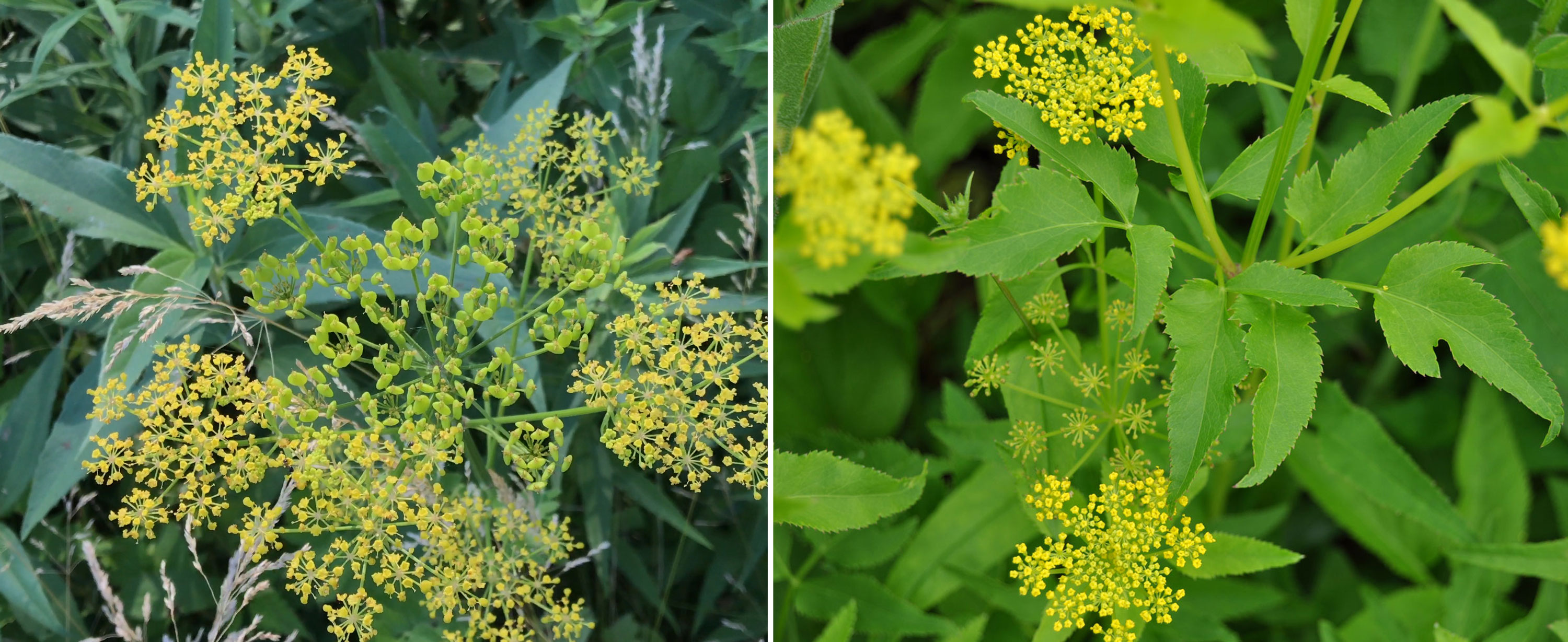What's the difference?: Wild parsnip vs. golden alexander

Wild parsnip and golden alexander both produce lacy, yellow flowers, but not knowing the difference between the two could result in a painful, burning rash.
That's because wild parsnip sap contains a substance called psoralen, which, when it comes into contact with skin in the presence of sunlight, can cause a severe, blistering rash that can take weeks to heal and leave scars, according to the Chicago Botanic Garden.
Handling wild parsnip should be done with care while wearing gloves, long sleeves and long pants to prevent this rash from developing; golden alexander requires no special handling because it does not have the sap that produces the burning skin condition. So how do you tell the difference between the two?
The size of the plants is key in differentiating between wild parsnip and golden alexander. Both have thick, green stems with the clusters of lacy, yellow flowers, but golden alexander is smaller and shorter than wild parsnip when the plants are mature. Golden alexander can grow to approximately 3 feet tall, while wild parsnip can reach 4 to 5 feet in height. Wild parsnip, which looks similar to Queen Anne's lace but with yellow flowers instead of white, also has bigger flat clusters of flowers, while the flower clusters on golden alexander are more loose and uneven.
You can also tell the difference between the two by the leaves. While wild parsnip leaves are deep and forked, golden alexander leaves are smooth and finely serrated, according to Carleton College's Cowling Arboretum.
One more key difference is the bloom time. Golden alexander, which is native to the Midwest, typically blooms earlier in the season, between April and June, while wild parsnip, which is not native to the United States, blooms later in the season, the Chicago Botanic Garden reports.
While wild parsnip grows across all of Illinois, golden alexander does not typically grow in the southern and western parts of the state, according to Illinois Wildflowers. Golden alexander grows in prairies and along the edges of woodlands and is also commonly seen in savannas, bluffs and open fields. Wild parsnip also grows in prairies and savannas, along with pastures and fields and along roads and railroad tracks.
